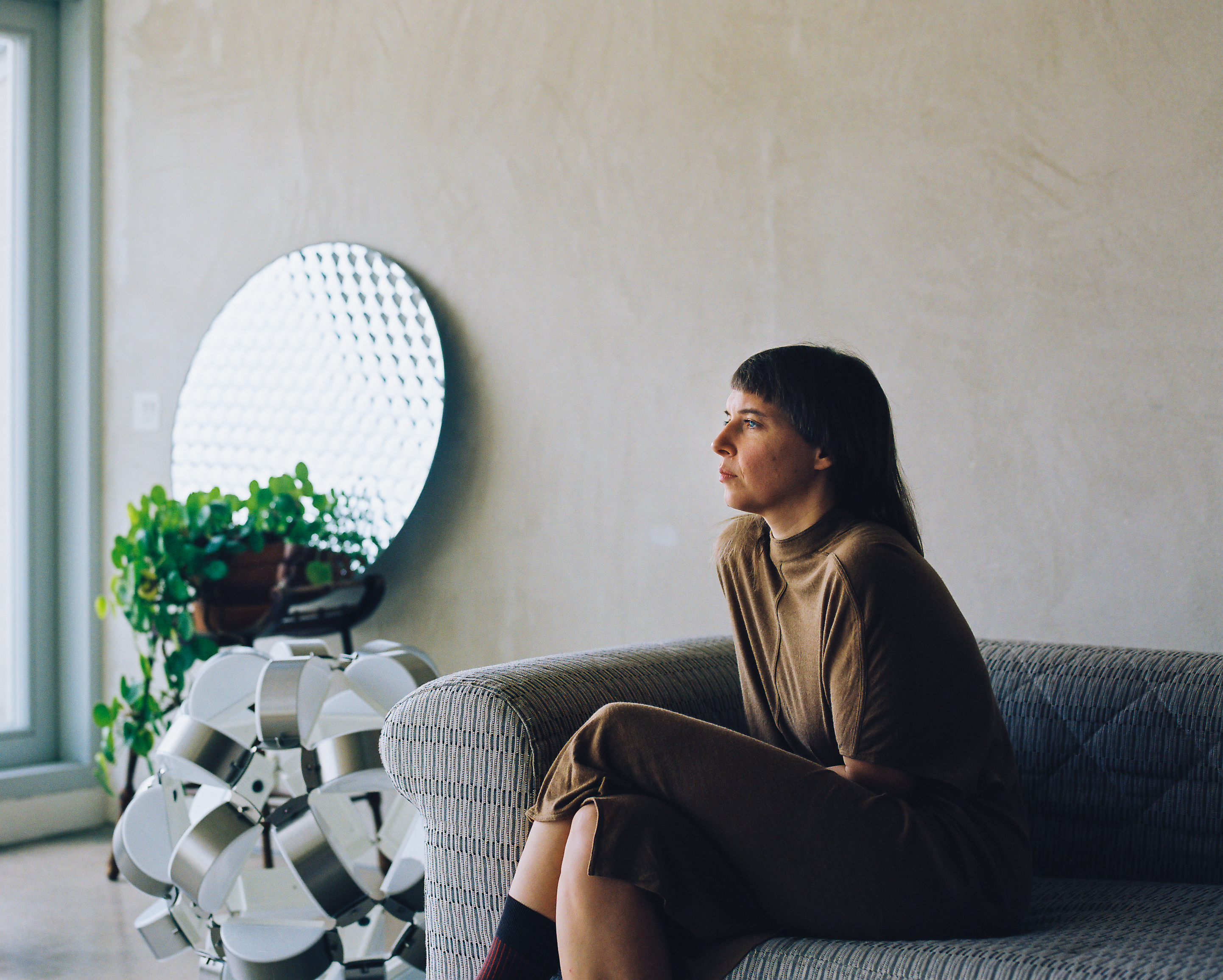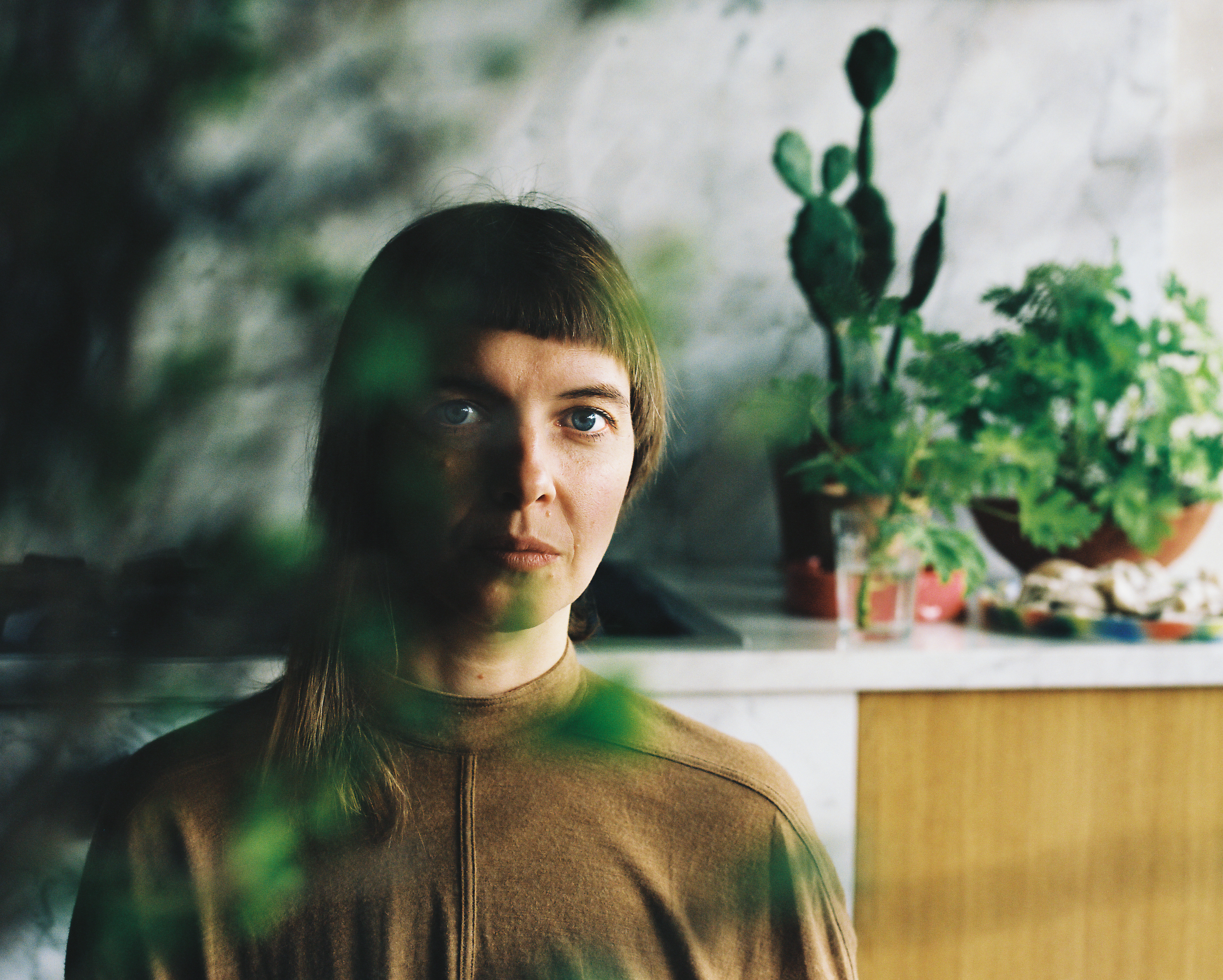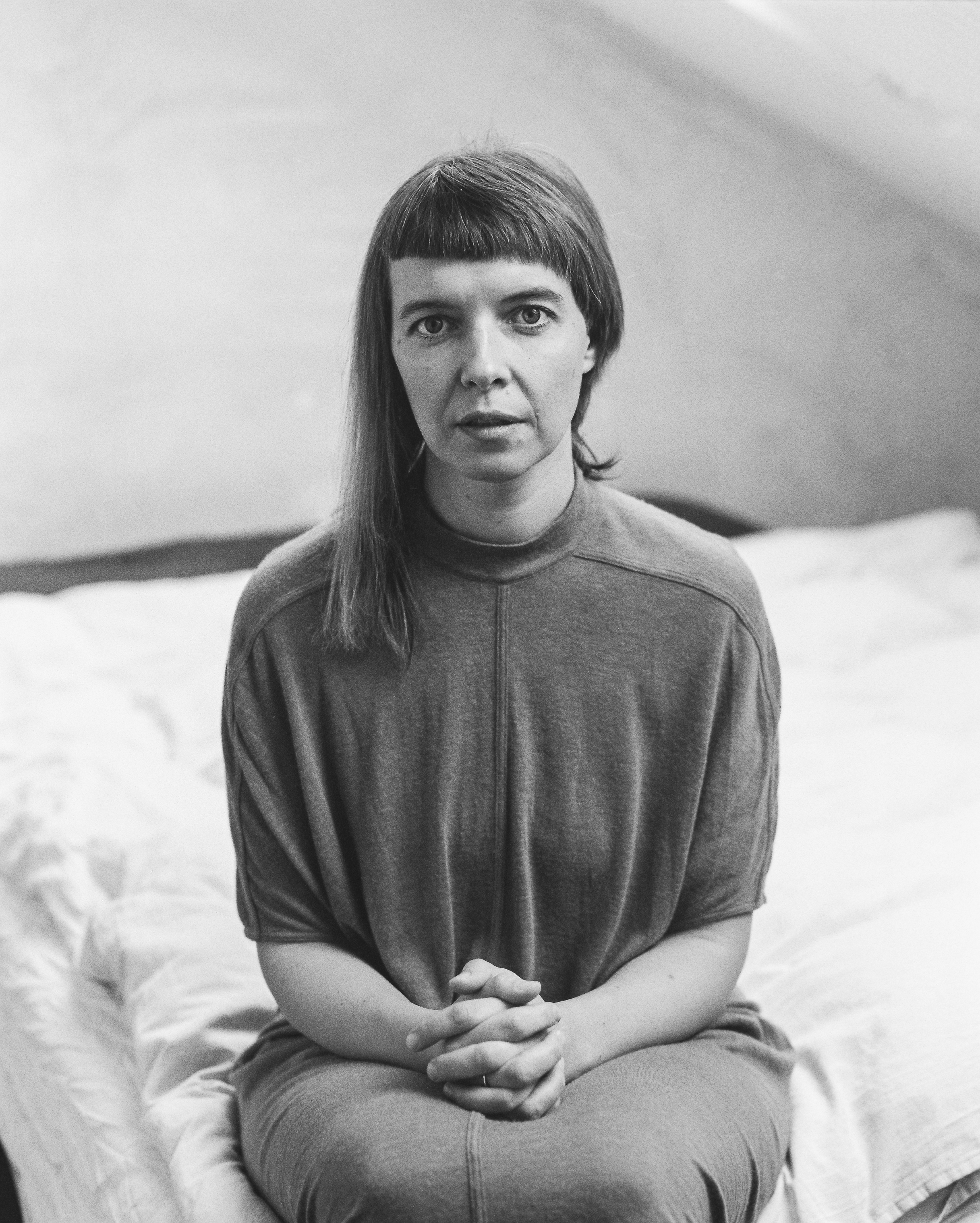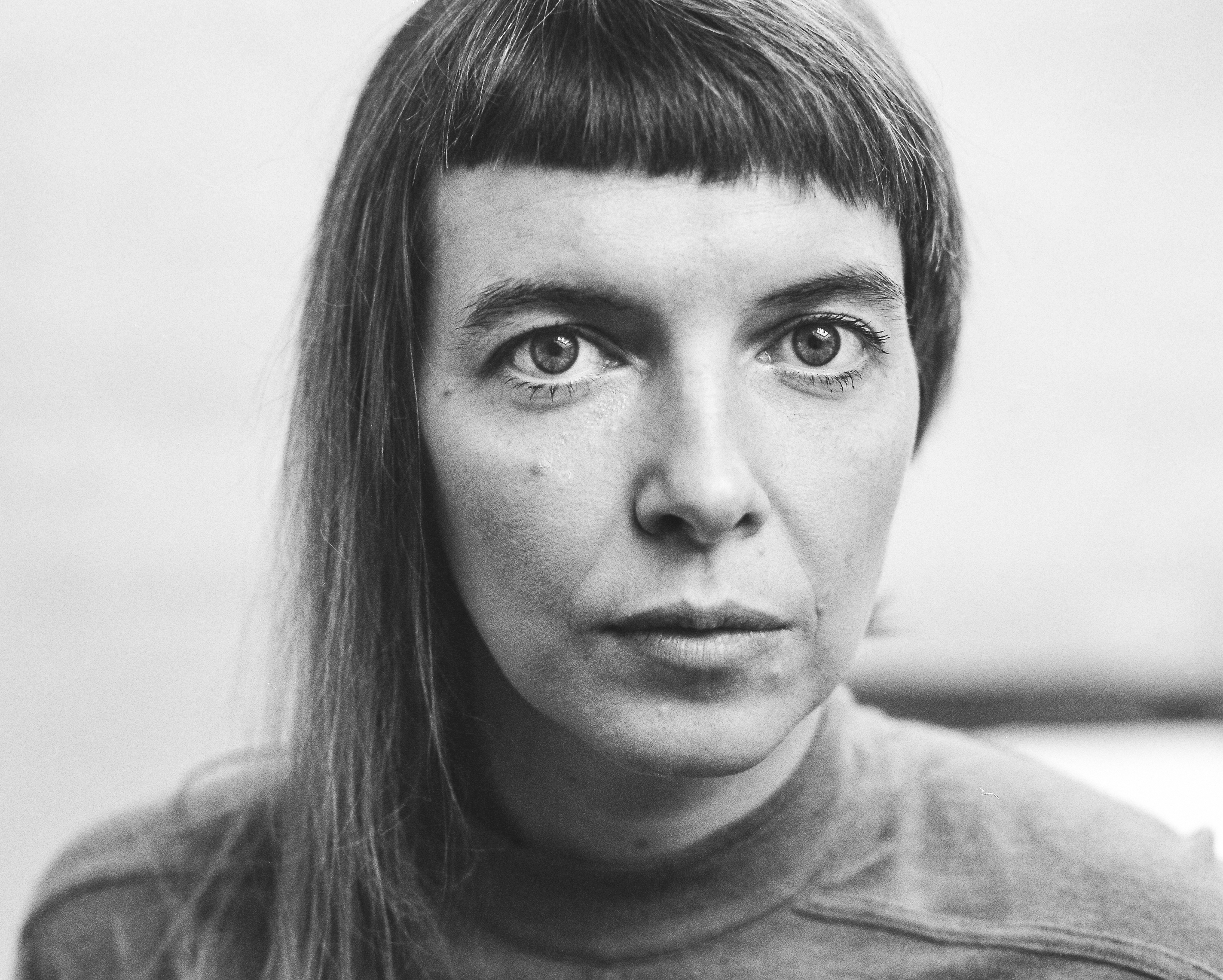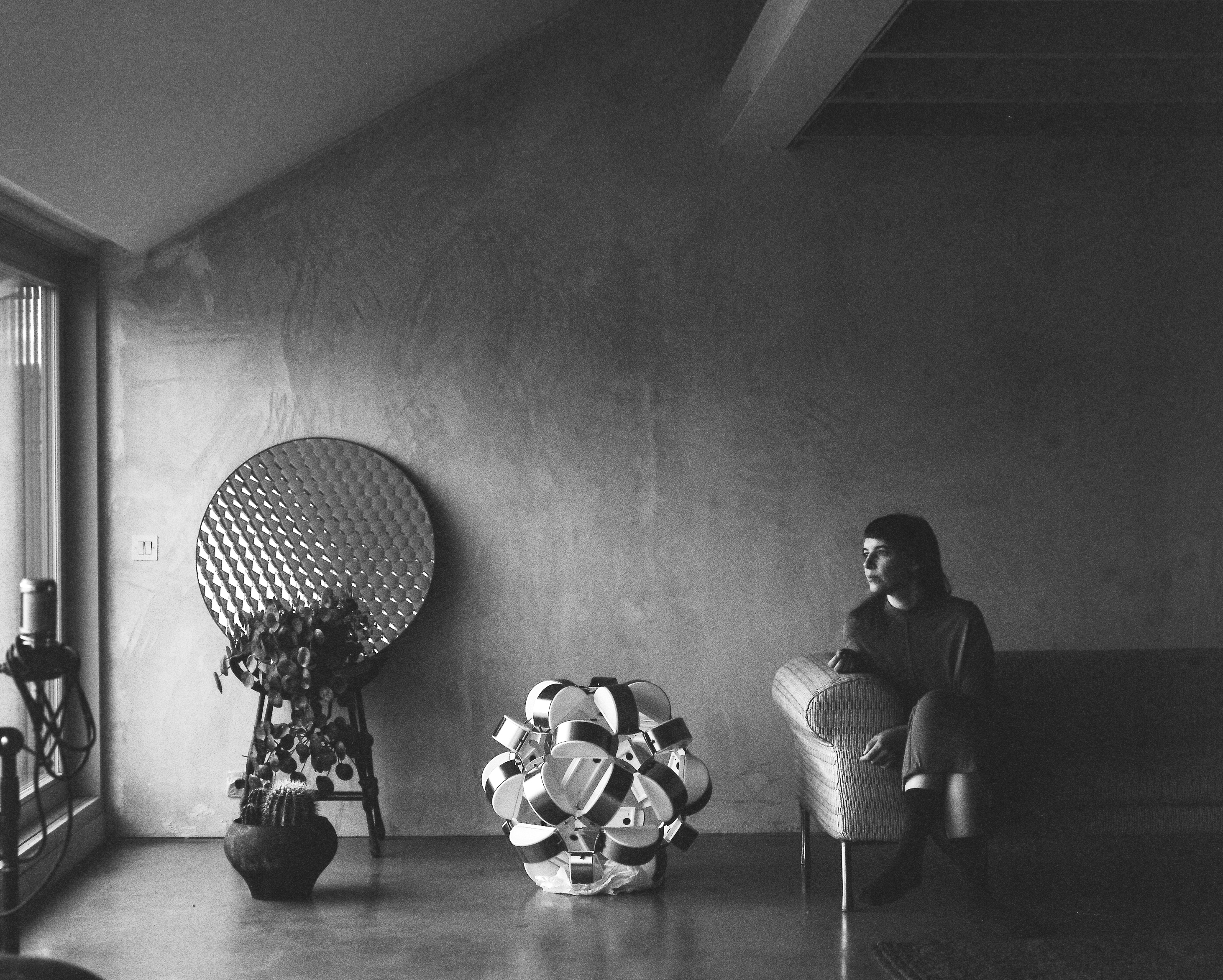Karolis VYŠNIAUSKAS | A Quiet Rebel: In Conversation with Lina Lapelytė
Composer and sound artist Lina Lapelytė doesn’t believe in hierarchies, yet she found herself at the top of the ‘Art Olympics’. In 2019, together with writer Vaiva Grainytė and director Rugilė Barzdžiukaitė, she was awarded the Venice Biennale’s ‘Golden Lion’ for the beach opera Sun & Sea (Marina). Two years later, we evaluate what this historic win meant for the music scene and for the artist herself.
Lina Lapelytė didn’t think it would turn out this way: that she, a composer who came of age attending experimental concerts in Kaunas and living in squats in London, would be thrust into the national spotlight. But that’s exactly what happened. News of the Venice win spread throughout Lithuania. The president awarded her with a national medal. It was the first such accomplishment in the country’s history. People were surprised, happy, and proud.
Sun & Sea turned the Venice pavilion into an actual beach, packed with singers of different ages, bodies, and worldviews. Their songs, performed over minimalistic music by Lapelytė, may sound funny at first, but behind the quirky lyrics lies deep worry. The opera exposes how humans, living in a capitalistic dream, are unable to act on the climate crisis. The façade is bright and tempting, but don’t be fooled by it—as The Guardian put it, it’s “a beach of doom”.[1]
The piece doesn’t try to preach, threaten, or shame viewers. It doesn’t even encourage them to do anything. It just exists—just like we all exist in our everyday lives. The power of Sun & Sea lies in its passivity. It shows that this is how unchangeable destruction is made: not when people do too much, but when they do nothing.
People waited for hours to witness this hedonistic view. The Biennale jury appreciated the experimental notion of the opera and noted how it offered a fresh perspective on the idea of a national pavilion. There’s nothing straightforwardly ‘Lithuanian’ about Sun & Sea, but that’s part of the idea. Climate crisis isn’t the problem of a single country, and it won’t be solved by any single country alone.
Sun & Sea is a truly collaborative creation. All three of its authors work without the right to have the final word; none has decision-making power over the others. Even though it’s presented as an opera, the name is used in a rather provocative way. Lapelytė doesn’t overestimate the power of music in the whole piece. The music is comforting, drifting towards pop sensitivity. Sometimes you almost forget that it exists. That’s how it should work, as Lapelytė herself explains it to us: “Music is not the main thing here, it’s needed only as much as the whole concept needs it”. That’s one of the takeaways of the success of Sun & Sea: that the collaborative process among different artists creates something more than the sum of its parts.
Lapelytė has been singing in choirs and playing violin since her childhood—something her mother wanted but wasn’t allowed to do. She finished violin studies at the Lithuanian Music Academy and grew up knowing what ‘professional’ music is and what it isn’t. She learned the rules, but decided to recreate them by studying sound art at University of the Arts London and sculpture at the Royal College of Art in London.
Sun & Sea was supposed to go on a world tour, with more than 20 stops from Mexico to Australia. Then the pandemic hit, and everything was postponed. The summer of 2021 brought the beach back to galleries, starting with Denmark’s Copenhagen Contemporary. Viewers again had the chance to look down at the singing people, as if they’re gods watching their creations. Only this time, the viewers had to keep a safe distance from each other.
Lapelytė, who turned 37 this year, is no stranger to the international art world. Her works combining experimental music and performance art have been presented at the Serpentine Pavilion in London, the Fondation Cartier contemporary art museum in Paris, and the MACBA museum in Barcelona. Living and working in both Vilnius and London, Lapelytė has been called “one of Europe’s foremost artists” by BBC’s Joe Lynam.[2] In this interview, conducted in person in May 2021 and via Zoom in June 2021, we meet the artist behind her creations.
When did you realise that the classical approach to music is not enough?
Contemporary music has always been close to me. I remember when I was 12 and read a magazine called Tango published by Kaunas’ avant-garde community. I read essays by John Cage. I found out about Laurie Anderson. It was something that I wasn’t learning in music school.
In my teenage years, I wouldn’t go straight home after school. I would go somewhere else. For example, to the gallery Langas to watch performances. I remember the experimental music festival Didelis pasaulis (Big World). I volunteered at the Kaunas Jazz festival so I could go to the concerts for free. I did that for four years in a row. I went to every single concert.
About that time, I met Vaiva [Grainytė]. She had her band already. I would sometimes join them as a musician.
London made a big impact on me. I first went there in 2003. In the summer we would go there with friends to live in squats and work random jobs. Lithuania wasn’t in the European Union yet and the salary gap between Kaunas and London was big, so it was a way for us to earn money. In London, I found myself in the community of sound artists. Eventually, I started creating my own noise compositions. This led me to study sound art.
Professors such as Cathy Lane and David Toop made a big impression on me. In my studies, I continued to search for the kind of music that I wanted to create. I saw two polar extremes: classical music on one side and pure experimental sound on the other. I wanted to land somewhere in the spectrum. I didn’t want to limit my music to a small group of listeners. I wanted to reach more people.
But first I needed to understand the impact of the classical music that was ingrained in me. I was taught that if the harmony is uncomplicated, or if the musicians are playing ‘uncleanly’, it’s wrong, it’s a mistake. If a piece has only one or two notes, well, it cannot be this way. It’s too primitive. But I find primitivism interesting! Only now I feel that I’ve unlearned some of the rules of classical music thinking. I’m freer now. I’m more relaxed.
What’s it like coming from the alternative music world to representing the country on the international art stage, talking with politicians and other influential people—becoming ‘part of the system’?
I accept it all with a grain of irony. But also with hope. The hope that people will see that you don’t have to take the usual road to get where you want to be. That you can create your own path. And that it won’t be for you only. For me, it’s important to share. There are artists who decide to stay in the alternative scene. But for me, it’s important that alternative music is heard, that it’s perceived as equal. I want us to be surrounded by diversity and tolerance. I want us to be able to see things from different perspectives.
Of course, I’m not the only one who thinks like that. A lot of people think the same. So, it’s also partly luck. Vaiva, Rugilė, and I—we were lucky. We were lucky to meet each other. We were lucky that our project was selected.
The first project by your trio was another conceptual opera Have a Good Day! about cashiers working in a supermarket. It seems that all three of you have an equal part in the creation of your pieces. It’s not a typical approach in the opera world, where the composer has the most power.
That’s true. None of us has the right to have the final word. We discuss until each of us feels good about the decision. We want our creative decisions to support a conceptual idea of what the piece should be like. I believe that listening to each other is more important than having a hierarchy.
For me, it’s important that the music isn’t there for its own sake. I see music as a tool to channel conceptual ideas. Sometimes I feel uncomfortable being called a ‘composer’. From my perspective, I just write songs that have a conceptual entrance to the topic. I want my music to open new layers for the listener. For me, music is a vehicle to enter a new place. It’s a tool. If music only brings aesthetic pleasure, then for me it’s not that interesting.
It’s also very important to create a connection with the performers of my music. I want them to feel comfortable. I ask myself if the performers are not co-creators of the music. I was taught that the performer’s duty is to fulfil the composer’s vision. But, as a performer, I always wanted to add something of my own. So now when I myself am in the composer role, I want performers to feel like they also are creators—that they can add something of themselves.
Traditionally, opera is seen as the work of a composer, but I don’t think that’s fair. Even if we’re talking about classical opera, I see it as a collaborative creation. The visual element and the script element play very important roles. Vaiva, Rugilė, and I—we want to change these standards. And often we succeed. I noticed that with Have a Good Day! if you bring this piece to a theatre festival, it’s seen as the work of a director. If it’s presented in the context of drama, then the most important person becomes the writer.
For us, the most important thing is the idea. When we have it, we watch how we can use our roles to fulfil the idea. When we have this foundation—that the idea is the most important thing—it’s easier to cut parts of the music or the script that we don’t need. For example, in order to fulfil the idea of community, we invited volunteers to become singers in Sun & Sea.
The people who sing in your performances aren’t those that we’re used to seeing on stage. More often it’s women than men. They’re not always professional singers. They’re of different ages and different body types. How important is that to you—to broaden who is ‘allowed’ to be on stage?
It’s very important. I want to bring people with different voices, in different age groups, of different races, even though with the latter, it’s hard in Lithuania. It all comes from the need to question the standard. I do see the youth cult on stage. You see a limited group of people there. But I’m curious about how different generations can communicate with each other. I’m curious about what we can create together.
This wish for diversity is also a challenge to me. Currently, I’m working on a project that involves people who are tone-deaf. Again, I need to change what I learned before. Previously, when I was selecting people for my projects, I didn’t look for professional singers, but the ability to match a pitch was essential. I needed people who could harmonise and sing together with others. Yet this new project is a test for myself: how much can I expand my understanding of singing? Can I work with singers who are opposing everything I was taught to believe music should be? In classical music culture, tone-deafness meant you just couldn’t perform. Those people were told to stay silent. But I want them to sing.
When I was selecting singers in Sweden, everyone said a similar thing—how they went to a choir and then were told that they shouldn’t come again. Or that maybe they should pretend that they’re singing, or at least sing a little bit quieter. There’s a clear social barrier, and I want to challenge it.
Two years have passed since your win in Venice. How have they changed you?
I’m still thinking about that. In the six months after the win, we continued to work intensively. We needed to find sponsorship to keep Sun & Sea going. The expectations before each of the showings were very high. We were dependent on this creation. The queues of people to see our work brought not only joy but also pressure. It was euphoric and very casual at the same time. We were living as a commune, living together, making food together, trying to keep human relations. It required all of our energy, but we did it with joy. And then COVID hit and stopped everything.
As an artist, I’m used to fighting for myself. Because an artist’s life is hard. So, after the Venice win, I sometimes find myself surprised. I suggest something—and now it gets the green light. But it also brings responsibility. So, I’m learning to be more careful. I think I’m optimistic about my work. It seems that everything’s possible. But with all of the new opportunities that came after the win, we need to measure everything so it can be done professionally and without us burning out in the process.
In a world that’s more connected than ever, the idea of a national art scene may look archaic. You yourself are a product of both Lithuanian and British music traditions. How important is this national aspect of your win to you?
When I think about national things, I feel rather uncomfortable. I don’t believe that you should think only about your own forest. It’s important for me to see through the borders of a single country, of a national border. For example, our collaborative approach to art, I believe, is important at the international level.
In our work, we touch on global topics. Of course, every global topic starts with you personally, but it doesn’t end with you. The climate crisis is a very broad and at the same time a very narrow topic because there’s something that each of us can do. Both micro and macro elements are important.
I think that on an international level, Lithuania is sometimes presented in a primitive, straightforward manner. I think our culture has layers of aspects that are important but we don’t recognise them as such. Our curator Lucia Pietroiusti, who is Italian, noticed some of them while working on Sun & Sea. For example, we have a deep connection with nature. The idea of coexistence and collaboration may come from that. We have it in our roots. To me, that’s more Lithuanian than amber or cepelinai [a traditional Lithuanian dish].
In the international press, Sun & Sea was presented mostly as a comment on the climate crisis. However, you see it as more than that. What was your intention behind the piece?
We didn’t want to channel a single specific idea with the piece. There are different narratives involved. The narrative of the climate crisis wasn’t so clear after the first shows in Lithuania, but it dominated in Venice. However, we see the climate crisis as a broader issue than just an environmental one. It seems that everything that you touch is connected with it. Diversity, tolerance, co-creation—all of these aspects are also related to climate. I don’t want the piece to be seen only through an environmental lens because the climate crisis itself is not only an environmental issue. I think it’s an issue of our coexistence.
Author Siri Hustvedt has said that we can be blinded by expectations when we’re experiencing art and that the best way to experience it is to come “naked and open”.[3] As Sun & Sea is traveling the world again, it seems impossible not to have expectations about this work. How do they change our perceptions of the piece?
I can relate to that. It was especially true after the Venice win. We came there thinking that maybe no one will want to see our pavilion. Why would they anyway?! So, the contrast between our imagination of how the Biennale would go and the reality was huge. People waited for hours, and they came prepared. They’d seen glimpses of the performance on the internet, they’d seen photos, they’d read reviews.
And yet, the live experience would always be something else. It would surpass their expectations. The art piece itself is more than what has been told about it. It’s live. It has its own atmosphere. It’s bigger than just a digital representation. I’m glad about that.
[1] https://bit.ly/3xAvmBa (accessed on 28 July 2021)
[2] https://spoti.fi/3jHSb0Q (accessed on 28 July 2021)
[3] https://vimeo.com/66634708 (accessed on 28 July 2021)
